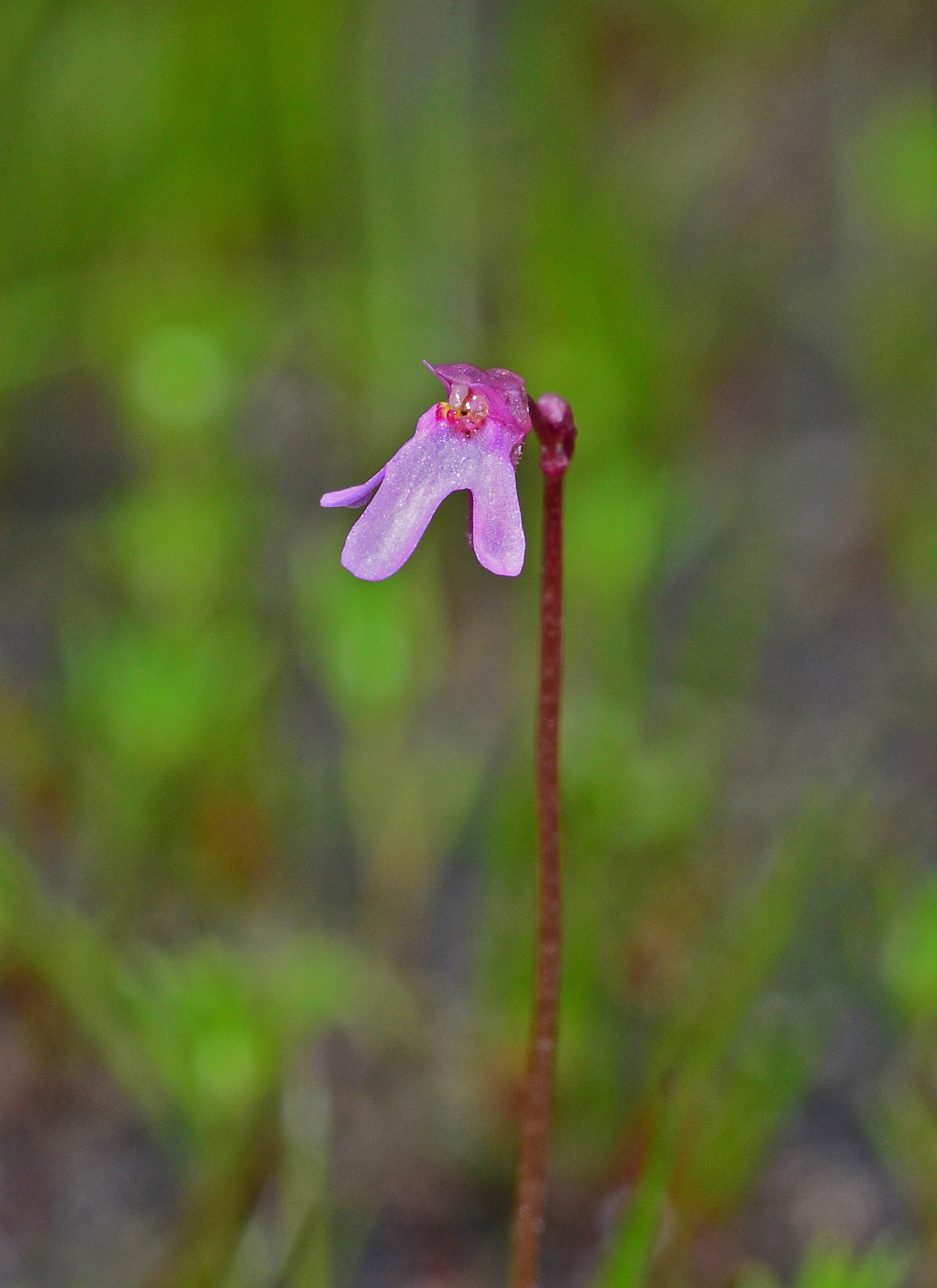Utricularia tenella
R.Br. Pink BladderwortTerrestrial annual; stolons absent. Leaves rosetted, narrow-obovate, 3–10 mm long, 0.5–1.5 mm wide. Traps ovoid, 1–1.2 mm long. Racemes 1–several, erect, 2.5–13 cm long, 1–3-flowered; sterile bracts absent; fertile bracts basifixed, ovate, 0.5–1 mm long; bracteoles similar to bracts; outer calyx-lobes subequal, obovate, c. 1.5 mm long, inner calyx-lobes equal, oblong, c. 1 mm long. Corolla 3–9 mm long, bright or pale pink with yellow on distal margin of palate; upper lip ovate, deeply divided into 2 acute lobes; lower lip larger, semicircular in outline, deeply divided into 3 oblong lobes; palate pubescent, distal margin with 4 longitudinal ridges; spur narrow-cylindric to narrow-conical, longer or shorter than lower lip. Capsule globose, 1.5–2 mm diam.; seeds globose c. 0.3 mm diam. Flowers Sep.–Dec.
LoM, Wim, GleP, VVP, VRiv, GipP, OtP, WaP, Gold, CVU, GGr, DunT, WPro, OtR, Strz. Also WA, SA, Tas. (Bass Strait islands). Mostly in wet heaths and winter-wet depressions in woodlands, chiefly in the west of the State, but scattered through to c. Wilsons Promontory in the east.
Jeanes, J.A. (1999). Lentibulariaceae. In: Walsh, N.G.; Entwisle, T.J., Flora of Victoria Vol. 4, Cornaceae to Asteraceae, pp. 547–553. Inkata Press, Melbourne.
 Spinning
Spinning


